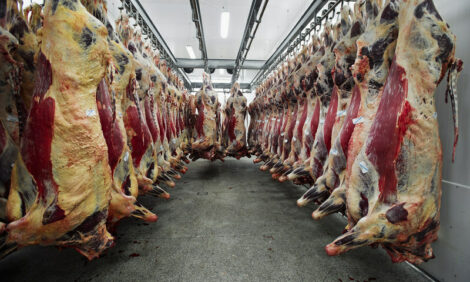



Beef Industry Lacks Growth of Competitors
GLOBAL - The longer term theme of increasing global meat demand remains intact, driven by population growth and rising per capita meat consumption in developing nations. Global meat consumption grew at an annual average rate of 2.7 per cent from 1970 to 2007; however significant discrepancies exist relating to the rate of growth over time, the composition of growth, and the origin of growth. These discrepancies have helped shape the global beef industry, says Australia's Commonwealth Bank.The beef industry, which was once the world’s dominant livestock industry, has lagged the growth in other meat sectors in
recent decades. Pigmeat overtook beef as the world’s most commonly consumed meat in 1978 and chicken claimed second
position in 2000. Beef demand has been sluggish while ‘white’ meat consumption has surged.
Over 80 per cent of global meat
consumption growth since 1970 has been in ‘white’ meat categories. Global beef demand has fallen for the past five years.
The ongoing decline in global beef consumption, despite rising total meat demand, largely reflects a continued deterioration
in the relative affordability of beef versus chicken and poultry. And tight beef supply, rather than strong beef demand, has
supported the appreciation in global beef cattle prices over the past decade.
In 2010 and 2011 global cattle numbers fell to
their lowest level since the mid-1990s and total slaughter declined to the lowest level in a decade. In the United States,
traditionally the world’s biggest beef producer, cattle numbers have been trending lower for the past 35 years. The US herd
is now at the lowest level since 1952.
These global developments, plus Australian seasonal conditions, have influenced Australian cattle prices. The Eastern
Young Cattle Indicator (EYCI) rose to a record A$4.27/kg in December 2011, up 30 per cent from the 12 year average. Low cattle
numbers in 2010 and improved seasonal conditions in 2010/2011 promoted a significant herd rebuilding programme. This
limited local beef production and resulted in strong restocker competition at saleyards around the country, ultimately forcing
prices higher.
The Australian herd rebuilding effort has been successful. The calf crop in 2011 surged 36 per cent and cattle numbers at the start
of 2012 have rebounded to their highest levels since the 1970s. Local beef production is forecast to rise to a record high
level. In addition to higher beef output, we believe restocker demand will subside in 2012/13, placing downward pressure on
local prices. Commonwealth Bank expects the EYCI to decline to A$3.60/kg by December before averaging A$3.57/kg in 2013. This forecast is
modestly below last year’s average price of $3.98/kg, but significantly above the 12 year average of A$3.30/kg.
TheCattleSite News Desk


